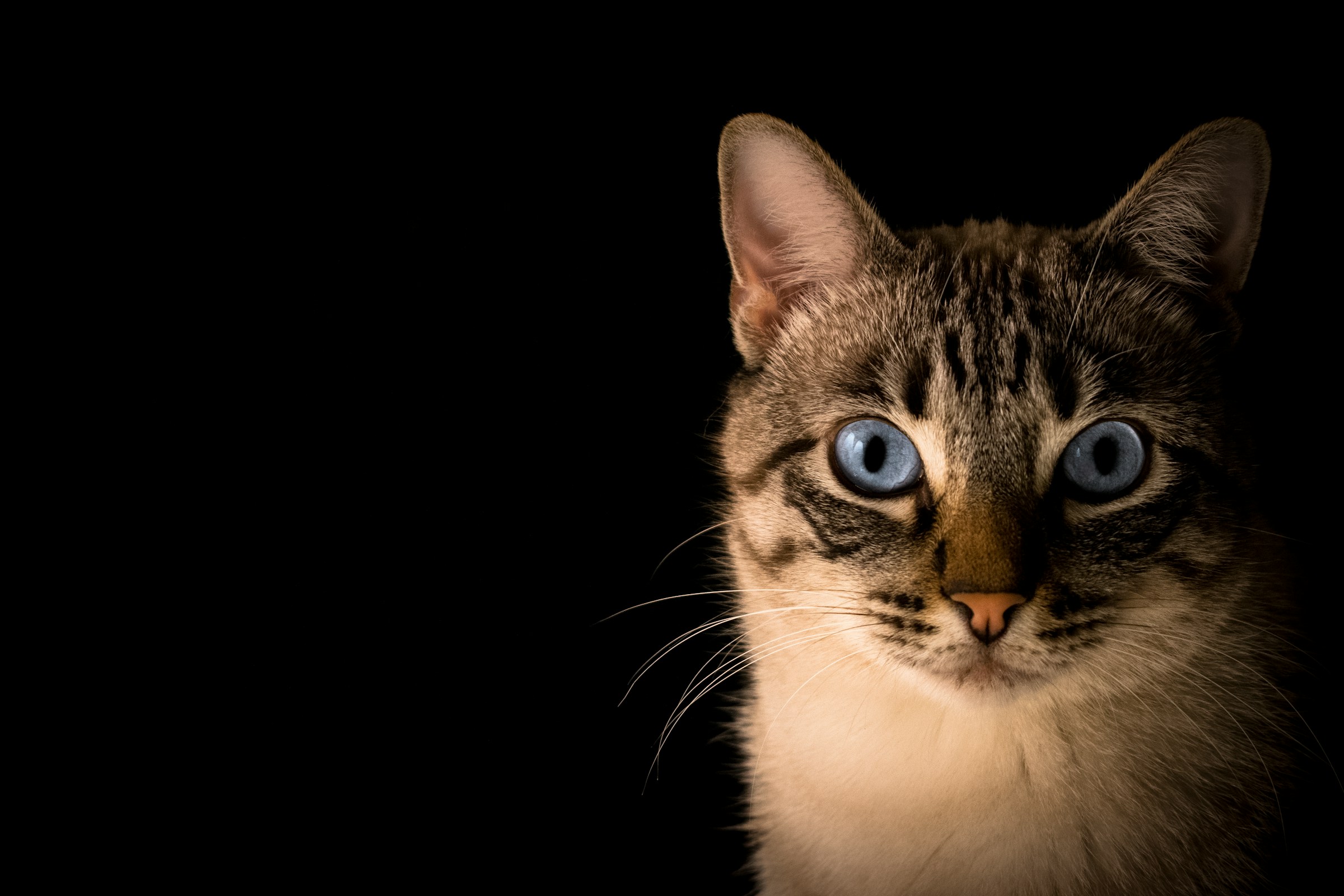Feeding time can be a source of anxiety for social cats, affecting their health and well-being. Creating a stress-free feeding space is essential for encouraging a relaxed dining experience. By understanding your cat's unique preferences and addressing their fears, you can transform mealtime into a comforting routine. This guide delves into practical tips to design an environment that alleviates social eating anxiety, ensuring your feline friend feels secure and happy while enjoying their meals. Embrace a new approach to feeding and foster a more peaceful atmosphere for your cat.
Understanding Cat Anxiety in Feeding Situations
Feeding anxiety in cats can stem from various factors, particularly in multi-pet households. One prevalent cause is social eating stress, where cats feel threatened or uneasy due to the presence of other pets during mealtime. This anxiety can lead to a reluctance to eat or even aggressive behaviour. Recognising the signs of cat feeding anxiety is crucial for pet owners. Common indicators include a cat eating quickly, hiding food, or showing aggression towards other pets during feeding times.
Cela peut vous intéresser : Creating the Purr-fect Cat Oasis: Designing Vertical Spaces and Scratching Zones for a Feline-Friendly Home
In multi-pet households, the social dynamics significantly influence feeding behaviour. Cats are territorial by nature, and the presence of other animals can heighten their stress levels. Ensuring each cat has its own designated feeding area can help alleviate this anxiety. Additionally, observing your cat’s behaviour during meals can provide insight into their comfort levels.
Addressing feeding anxiety involves creating a calm and safe environment for your cat. Consider using separate feeding stations or feeding them at different times to reduce competition. By understanding and mitigating these stressors, you can help your cat enjoy a more peaceful and enjoyable mealtime experience.
Avez-vous vu cela : Creating the Purr-fect Cat Oasis: Designing Vertical Spaces and Scratching Zones for a Feline-Friendly Home
Creating a Calm Feeding Environment
Establishing a calm feeding space is essential for reducing anxiety in cats. The location of the feeding station plays a pivotal role in ensuring cat comfort. Choose a quiet area away from household traffic and noise. This helps minimise stress and allows your cat to eat in peace.
For cats prone to anxiety, consider using barriers or creating separate spaces. This can be particularly beneficial in multi-pet households. These barriers help prevent other pets from encroaching on the cat's territory, fostering a sense of security during mealtime.
Feeding station setup should also focus on cleanliness and routine. Regularly clean bowls to prevent the build-up of odours and bacteria, which can deter cats from eating. Consistency in feeding times can also provide comfort, as cats thrive on routine.
By prioritising these elements, you create an environment that supports your cat’s well-being. A well-thought-out feeding station setup can significantly enhance your cat's overall dining experience, promoting a healthier and more relaxed mealtime.
Establishing a Consistent Feeding Routine
Creating a consistent feeding schedule is crucial for reducing anxiety in cats. A regular routine provides predictability, which can greatly alleviate stress. Cats are creatures of habit, and knowing when their next meal will come helps them feel secure. By sticking to a set feeding time, you ensure that your cat's feeding practices are stable and reliable.
Transitioning to a consistent routine can be done gradually. Start by feeding your cat at the same time each day. If your cat is accustomed to free-feeding, slowly reduce the amount of food available between meals. This helps them adjust without feeling deprived.
Monitoring your cat's food intake and behaviour is essential in this process. Keep an eye on how much they eat and any changes in their behaviour. This can indicate how well they are adapting to the new schedule. If your cat seems anxious or refuses to eat, reassess the feeding times or the amount of food provided.
Benefits of a regular feeding schedule include improved digestion, weight management, and reduced anxiety. By implementing these cat feeding practices, you create a more structured and calming environment for your feline friend.
Socialization Strategies for Anxious Cats
Helping your cat adjust to multi-pet dynamics involves thoughtful cat socialization techniques. A gradual introduction during feeding times can ease anxiety. Start by allowing cats to see each other from a distance, progressing to supervised interactions. This method helps reduce stress and builds familiarity.
Interaction techniques are crucial in managing these dynamics. Use positive reinforcement to encourage calm behaviour. Reward your cat with treats or affection when they remain relaxed around other pets. This approach reinforces positive associations with shared feeding times, promoting peaceful coexistence.
Managing competition and jealousy is another aspect to consider. Ensure each cat has access to individual resources, such as separate food bowls and feeding areas, to minimise rivalry. This strategy helps prevent territorial disputes and fosters a harmonious environment.
By incorporating these strategies, you support your cat's emotional well-being and cultivate a more serene household atmosphere. Such methods not only benefit your cat but also enhance the overall dynamic within a multi-pet home.
Recommended Products for a Stress-Free Feeding Experience
Creating a stress-free feeding environment for your cat involves selecting the right cat feeding products. Specialised feeding bowls designed for anxious cats can make a significant difference. These bowls often feature non-slip bases and raised edges to prevent spills, offering a stable and secure eating experience.
Anti-anxiety solutions such as puzzle feeders and slow feeders are highly beneficial. Puzzle feeders engage your cat’s mind, turning mealtime into a stimulating activity. They require your cat to solve a problem to access their food, which can help reduce stress by providing mental enrichment. Slow feeders, on the other hand, are designed to prevent fast eating, which can be a sign of anxiety. By slowing down the eating process, these feeders promote better digestion and reduce the risk of vomiting.
Evaluating calming products like pheromone diffusers can further enhance your cat's feeding experience. These diffusers emit synthetic pheromones that mimic the natural ones cats produce, creating a calming environment. They can be especially useful in multi-pet households, helping to reduce tension and promote a peaceful atmosphere during feeding times.
By incorporating these feeding tools, you can support your cat's well-being and foster a more relaxed and enjoyable mealtime.
Modifying the Feeding Layout for Comfort
Creating an optimal feeding layout is essential for reducing stress in cats. A well-thought-out cat feeding design helps minimise distractions and promotes a sense of security. Start by selecting a quiet area away from high-traffic zones. This reduces noise and movement that might disturb your cat during mealtime.
In multi-cat households, space optimisation is crucial. Consider using vertical space to establish safe feeding zones. Cats naturally enjoy elevated areas, so adding shelves or cat trees can provide individual feeding spots. This not only maximises space but also caters to a cat's instinctive desire to perch and observe their surroundings.
Having multiple feeding stations is vital in homes with more than one cat. Each cat should have its own designated area to eat, preventing competition and territorial disputes. This setup ensures that all cats can dine peacefully without feeling threatened by others.
By focusing on these elements, you can create a cat feeding design that supports your pet's well-being. An effective layout not only enhances your cat's dining experience but also contributes to a harmonious household environment.
Expert Insights and Research on Cat Feeding Anxiety
Understanding feeding-related anxiety in cats requires insights from cat behaviour experts and veterinarians. Experts emphasize the importance of recognising subtle signs of distress, such as changes in eating patterns or avoidance of the feeding area. Veterinary advice often highlights the need for environmental adjustments to alleviate these anxieties.
Recent feeding anxiety research indicates that cats are highly sensitive to their surroundings. Studies show that a chaotic or noisy environment can exacerbate stress, leading to feeding issues. Ensuring a calm, consistent setting is crucial for reducing anxiety. Research also suggests that individual feeding stations can significantly decrease competitive tensions in multi-cat households.
Cat behaviour experts often share anecdotes illustrating the effectiveness of tailored interventions. For instance, one case study involved a cat exhibiting aggressive behaviour during mealtime. By consulting a behaviourist, the owner implemented separate feeding times and spaces, resulting in a noticeable reduction in aggression.
These insights underscore the importance of understanding each cat's unique needs. By combining expert guidance with practical adjustments, pet owners can create a more harmonious feeding experience, ultimately supporting their cat's emotional and physical well-being.
Personal Experiences and Anecdotes
Understanding cat feeding challenges through real-life stories offers valuable insights. Many cat owners have shared their experiences of managing feeding anxiety, highlighting diverse approaches and solutions. These cat owner experiences reveal that each cat's needs are unique, requiring tailored strategies to reduce stress.
For instance, one owner noticed her cat's reluctance to eat in noisy environments. By relocating the feeding station to a quieter room, she observed a marked improvement in her cat's eating habits. Another story involves a household with multiple pets, where a cat displayed aggression during mealtime. Implementing separate feeding times and spaces significantly eased the tension and improved harmony.
These anecdotes underscore the importance of observing your cat's behaviour and adapting the environment accordingly. Owners often find that small changes, such as adjusting feeding locations or using specialised bowls, can make a significant difference. Community stories also highlight the effectiveness of real-life solutions like slow feeders or puzzle feeders, which engage cats mentally and help alleviate anxiety.
By sharing these personal journeys, cat owners can learn from each other's experiences, fostering a supportive community that helps tackle feeding challenges with empathy and creativity.






